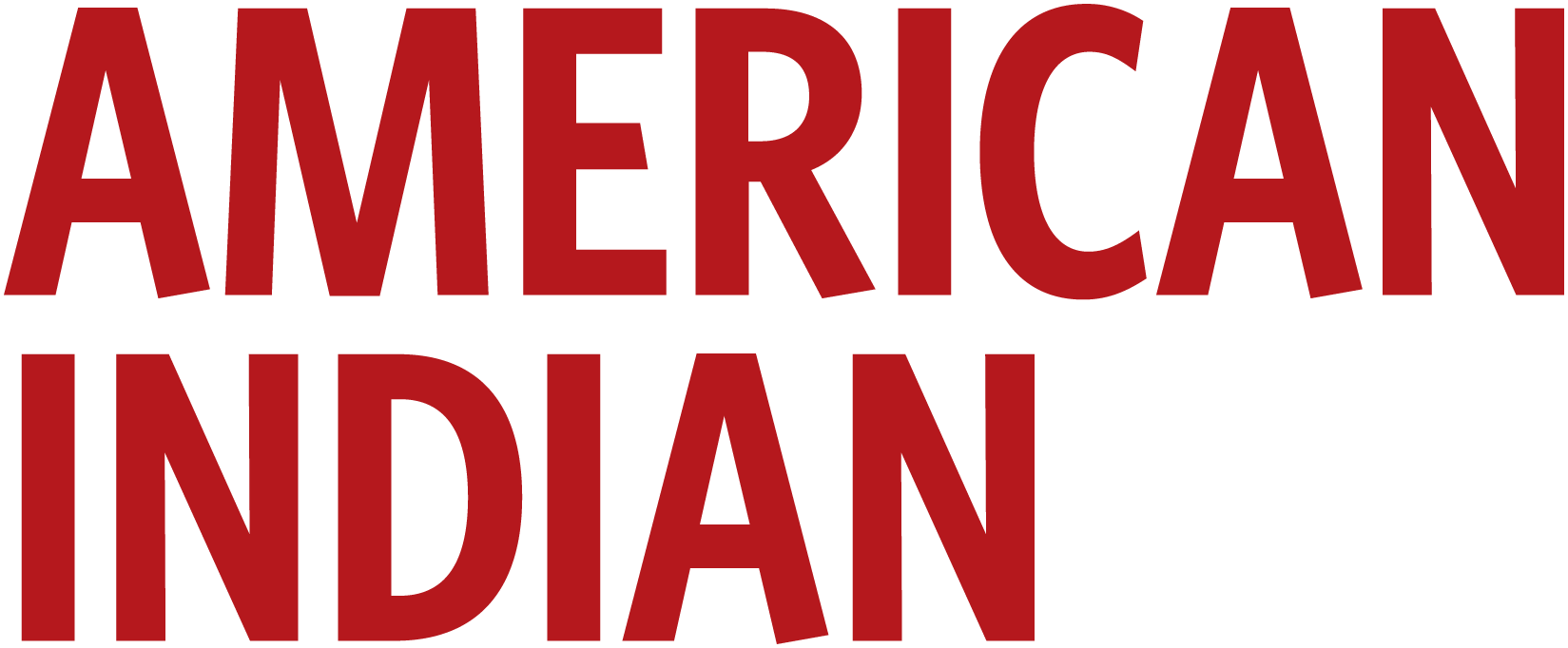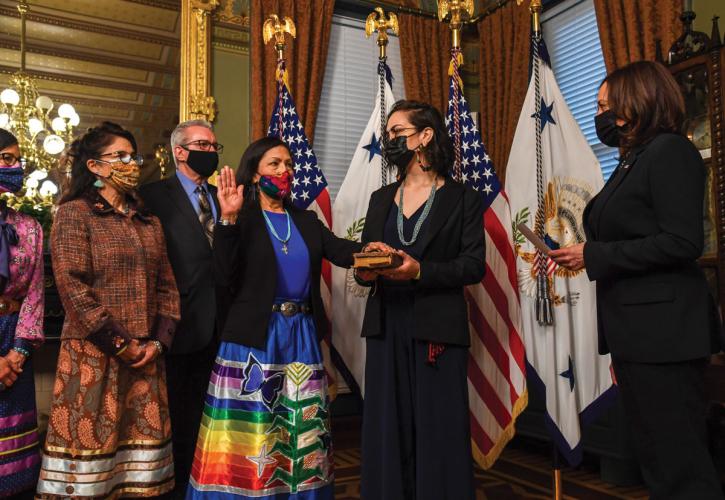When President Joe Biden nominated me to be the U.S. Secretary of the Interior (Department of the Interior, or DOI), I felt the profound importance of what that moment meant for Indigenous peoples in our country. I knew then, as I still feel now, that we’re at the beginning of a new era where Indigenous knowledge in our work to move with urgency to combat systemic inequities and craft policies to ensure fairness and a bright future for everyone is valued and prioritized. Representation matters.
As I said at my confirmation hearing, the significance of my role as the first Native American cabinet secretary is not lost on me. When people whose communities have long been underrepresented and oppressed are at the decision-making table, we are able to develop solutions that are rooted in equity and inclusion.
I’m proud to be part of an administration that recognizes and trusts that my life experiences can inform policymaking to correct the mistakes of the past and create a foundation for an equitable future. With humility and gratitude, part of my role at the department is to be a megaphone for Tribal issues and bring Indigenous representation to the highest levels of government. Native Americans, Alaska Natives and Native Hawaiians have pushed for this kind of representation since the dawn of colonization.
During my time in the U.S. Congress representing New Mexico, I worked on the missing and murdered Indigenous people’s crisis. As the haunting vision of empty red dresses hanging outside the National Museum of the American Indian raised awareness of the crisis through art in 2019, my colleagues and I supplemented that with our work to pass the Not Invisible Act and Savanna’s Act.
Now, with my formation of a new Missing and Murdered Unit and the launch of the Not Invisible Act Commission, the Interior Department leads the way to implement these landmark laws. By collecting evidence, filling information gaps, and helping local and Tribal law enforcement and the U.S. Department of Justice solve cases, we are marshalling resources across the federal government to bring justice to families.
I am a daughter, a mother, a sister and an “auntie.” I understand how important this work is to the families who suffer the loss of a loved one to this violence.
As we continue to work on the crises that face Indian Country, we must also recognize that a long history of forced assimilation contributes to the trauma and disparities that exist in our communities. Beginning with the Indian Civilization Fund Act of 1819, the U.S. government forcibly assimilated Indigenous children by establishing Indian boarding schools across the nation. After taking children from their families and communities to distant residential facilities, their identities, languages and beliefs were suppressed, often violently.
To begin healing from this disturbing history, I recently launched a Federal Indian Boarding School Initiative in June. This comprehensive review will investigate the loss of human life and lasting consequences of residential Indian boarding schools. The primary goals of the initiative will be: to identify boarding school facilities and sites; the location of known and possible student burial sites located at or near school facilities; and the identities and Tribal affiliations of the children interred at such locations.
The traumas of the past and the inequities of today don’t exist in silos. They intersect and compound the dynamics of power and oppression.
After decades of a lack of investment in public health and infrastructure, COVID-19 exacted an especially high toll in Indian Country. Thankfully, we have an ally in President Biden, who recognizes that addressing systemic oppression is central to building back better. President Biden’s pandemic recovery plan has made historic and unprecedented investments in Tribal communities, including billions in funding for infrastructure development, public safety, social services and important governmental programs.
The Biden-Harris administration is also robustly including Native American, Alaska Native and Native Hawaiian communities as we build a clean energy economy that creates good-paying jobs and conserves our natural resources. Like other communities of color, Indigenous communities have borne the burden of climate change and energy development disproportionately. Many communities are making tough decisions to leave their ancestral homelands or stay and manage sea level rise, extreme heat, catastrophic storms or water shortages brought on by climate change.
The president’s Build Back Better agenda will enable the DOI to help clean up legacy pollution on and near Tribal lands and accelerate solar and wind energy projects on our public lands, which will help power Indigenous communities everywhere. Additional investments in broadband internet, clean water infrastructure, transportation and climate resilience will ensure better health outcomes, increase opportunity and promote self-governance.
We know that to ensure success, we must respect Tribal sovereignty and live up to our trust and treaty obligations. Across the administration, we are working with Tribal governments, organizations and advocates to ensure Tribal communities are consulted in policies that impact them.
From the traumas of Indian boarding schools to the legacy of open-pit uranium mining, my ancestors—and Indigenous peoples all across the country—have endured systemic oppression that often has been cast by the very department I now lead. As we enter this new era, I feel the profound weight and opportunity of this moment; I feel the responsibility to carry on the legacy of the many Native leaders who came before me. Their charge—and mine—is one in which equity, access and science can and will guide the department’s decision-making.
As we move forward, we will never forget the past. We must educate the American public about the worst parts of our past so that we can grieve, heal and then build a better future for our children and our children’s children.
These first months have shown me and the country that we can accomplish more if we work together. I know that by acknowledging the past and valuing Indigenous knowledge, we can build a brighter future for everyone.


